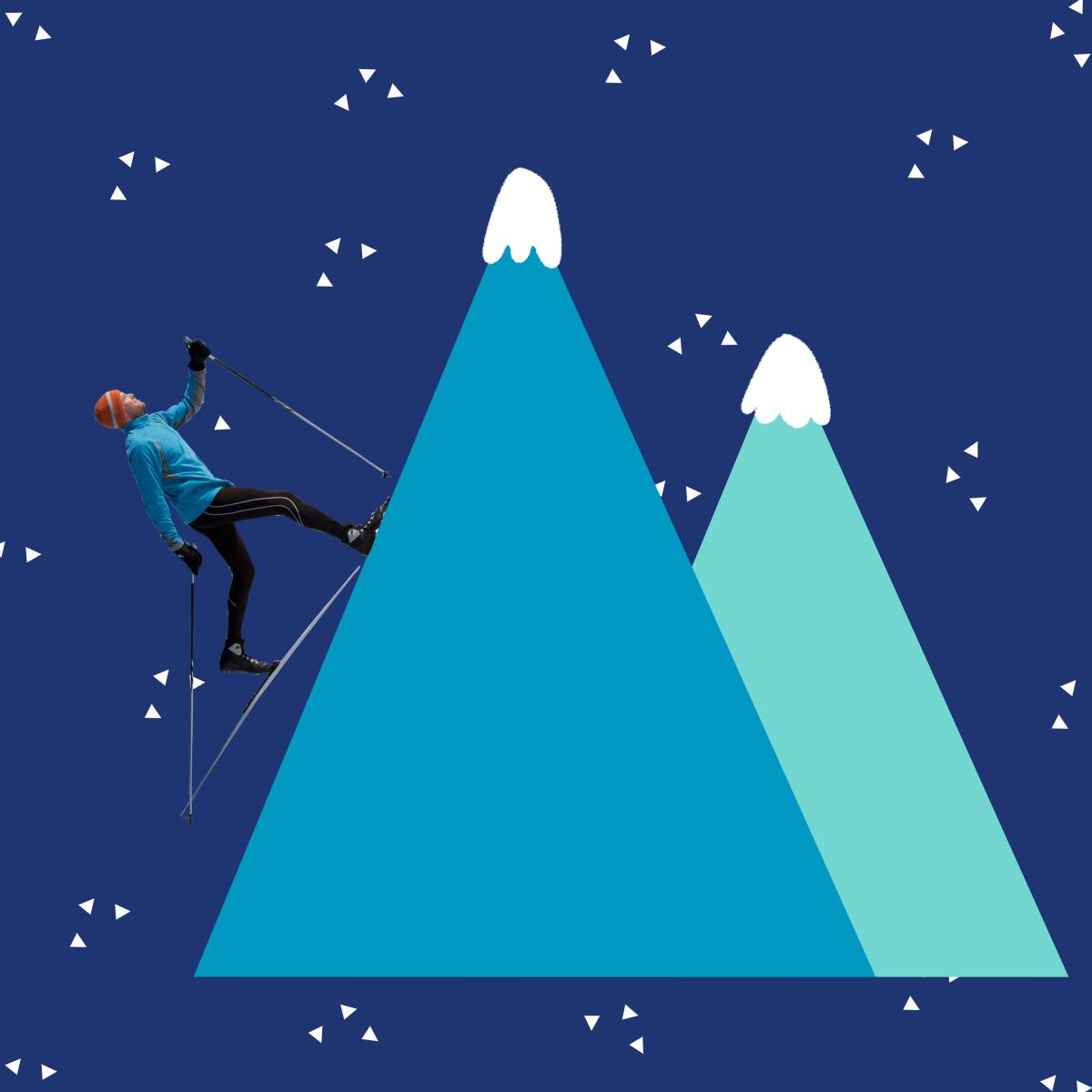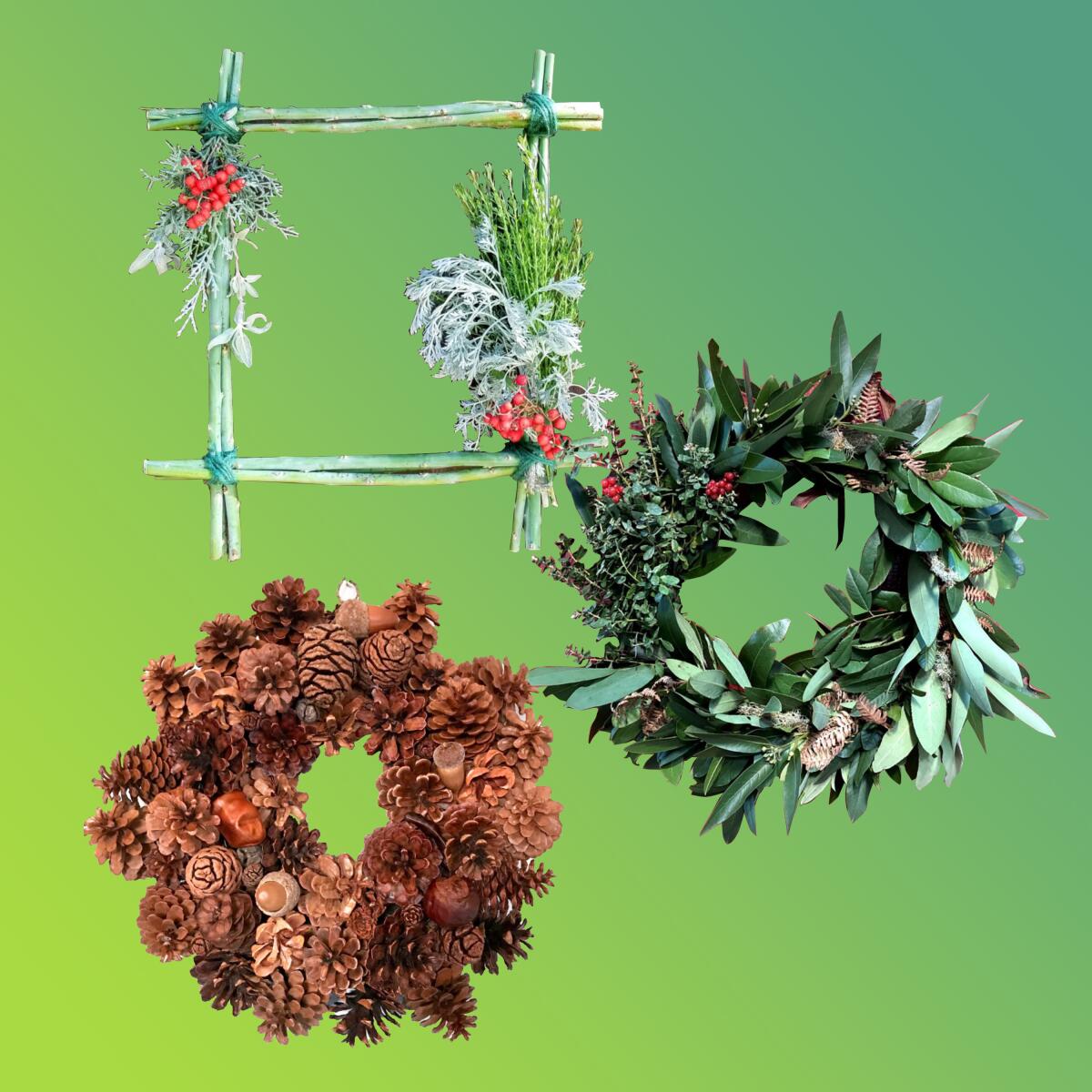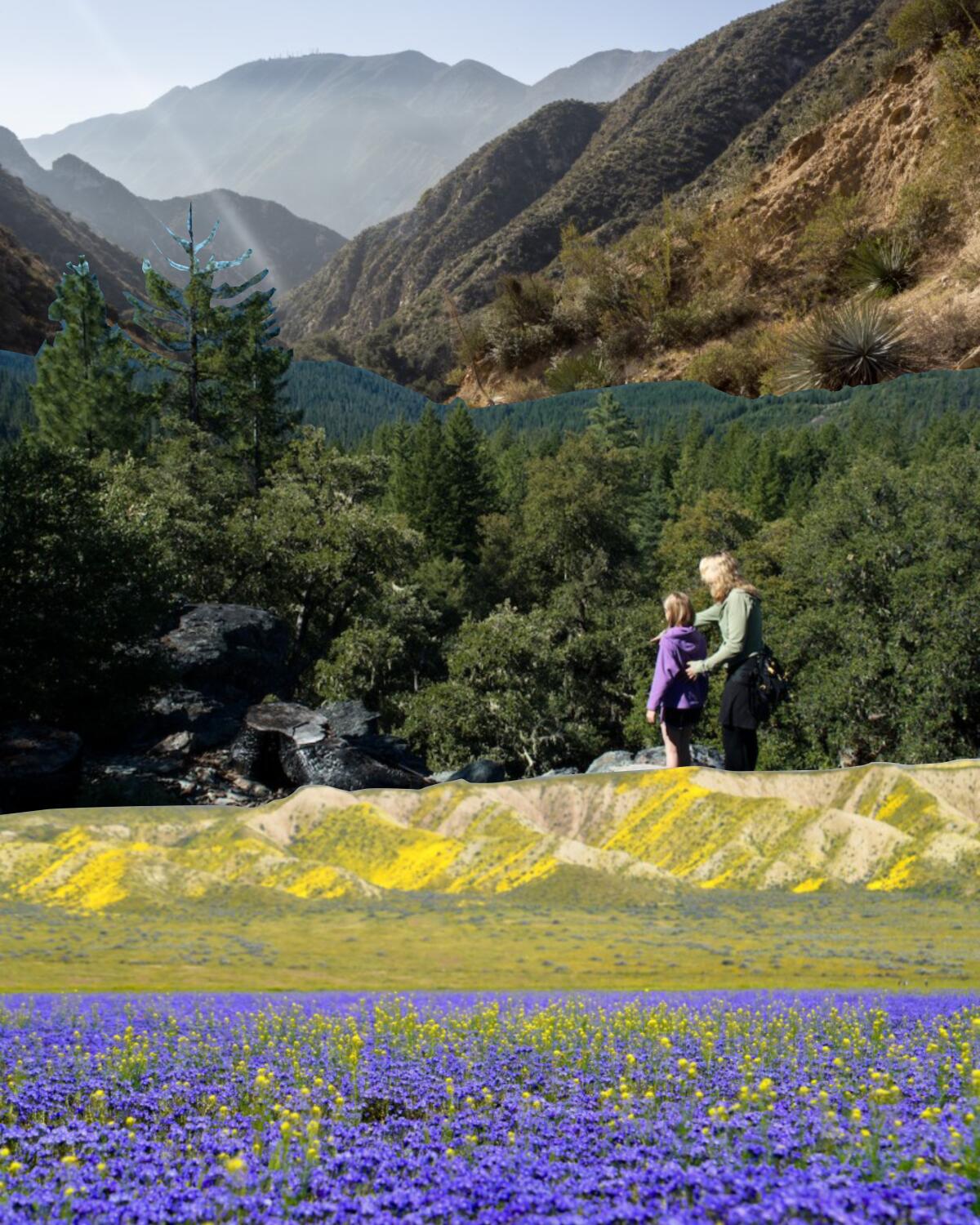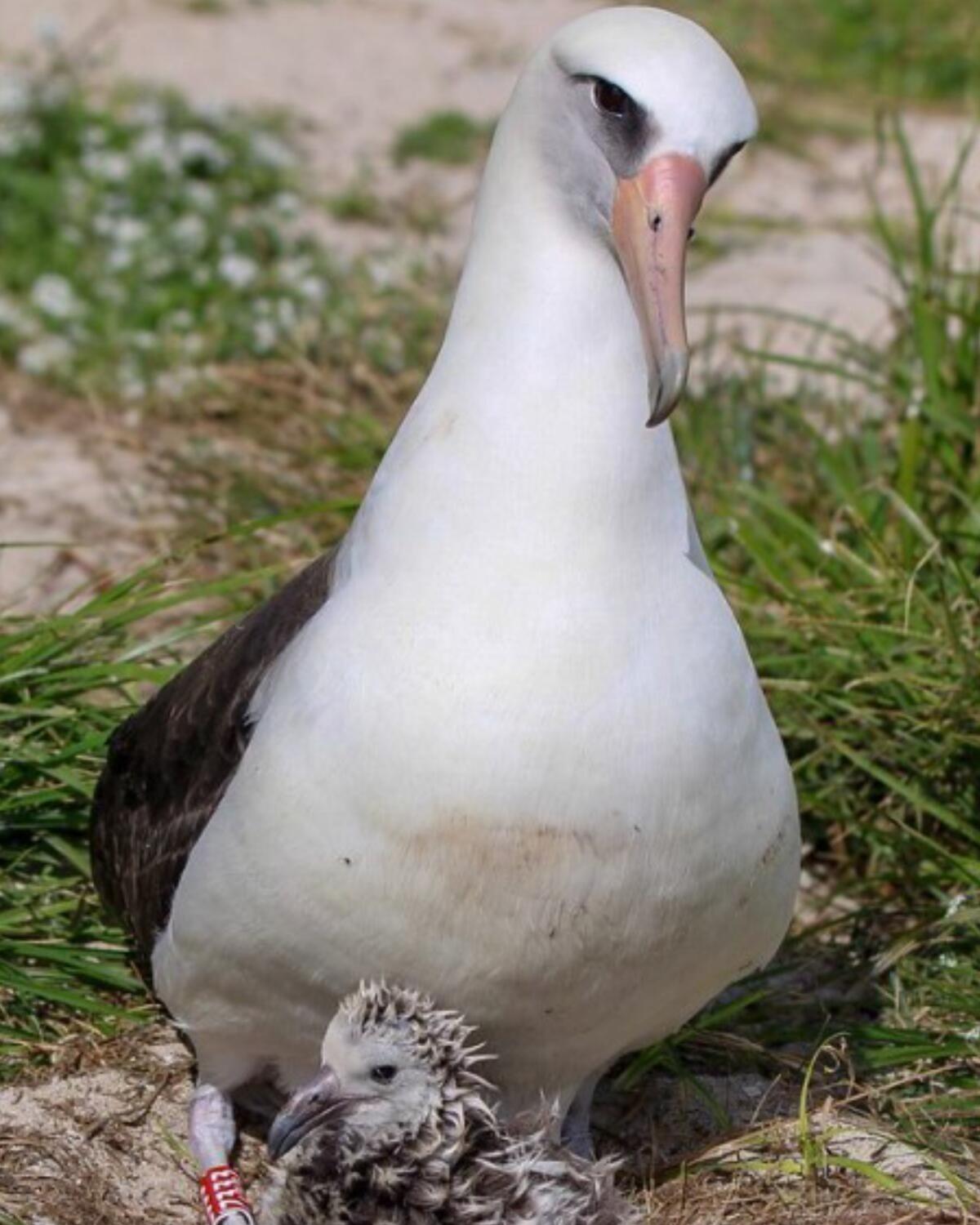The Wild: Will uphill skiing finally take off?

By Mary Forgione
Design and illustrations by Micah Fluellen
Sign up to get The Wild sent weekly to your inbox.
Welcome, readers of The Wild. Two words: uphill skiing. Sounds crazy, right? The sport, also known as skinning or ski mountaineering, has been around for awhile. Now it’s booming because it keeps skiers and boarders away from crowds and off ski lifts, ideal for these socially distant times.
Uphillers, as they’re sometimes called, use “skins” that cover the bottom of their skis to tromp up a slope — a super-tough, lung-busting workout — and then do a downhill run. Snowboarders do the same thing with split boards, which come apart to create mini-skis with skins for the uphill trudge.
It’s also cheap; Mammoth Mountain charges $29 for an uphill ticket (December single-day lift tickets cost $139 to $199). The Eastern Sierra resort offers three uphill routes you can access from each of its base lodges. Closer to home, Mountain High near Wrightwood uses traffic-light-style signals to tell uphillers when it’s safe to go (see the rules here).
One last thing: It’s dangerous. No ski patrol, no avalanche spotters, no groomed trails. You need to hone your wilderness/first-aid skills and maybe go with a guide. And you need to know how not to wander off and get lost.
Still interested? This story will tell you what you need to know to get started.
By the way, there have been reports about the Lake Tahoe area and Mammoth Lakes shutting down because of the stricter state and local COVID-19 rules. Ski resorts remain open near and far; lodging, however, is another matter. We sort it out for you.
3 things to do this week
With coronavirus cases spiking and stricter stay-home rules, you probably have a lot of at-home time on your hands. Here are events that complement your daily walk, hike, bike tour or workout.

1. Party with conservationists and musicians deep in the woods. Take a road trip to an evergreen forest in Oregon for “Rogue Routes: Eco Mode,” a live-streaming event sponsored by travel website Atlas Obscura and Nissan. You’ll hear birder and social activist Jason Ward as well as musical performances by harpist Mary Lattimore, vocalist Julianna Barwick and folk musician Tré Burt. It happens live at Camp Colton outside Portland, Ore.; you can watch at home for free. Tune in Dec. 20 at 4 p.m. Pacific.

2. Fans of native plants square off to create holiday wreaths. Who’ll win? “Wreath Masters” could be “The Great British Bake Off” of the native plant world. Last month, the California Native Plant Society challenged fans, gardeners and members to create wreaths made from manzanita, red toyon berries, cones, acorns, sage — really anything from the state’s 6,000-plus native plants that was grown in a garden and “ethically sourced” (no forest plants were harmed in the making of these wreaths). Check out the entries.
Now it’s time to get all judgy. Four pros will award winners in categories that include “most ‘I want to hang this on my door,’ ” most whimsical, and best in show. Drop in to see the creations, learn their inspirational backstory and see who wins starting at 6 p.m. Friday (the virtual event is free and open to all who register). Register here.

3. Become a better landscape photographer, without going anywhere. Here’s a nice holiday gift: Nikon School Online classes are free through the end of December. Setting Smartphones aside, these classes are for people who use actual cameras. Photographer Taylor Glenn leads the landscape session, which explains understanding light — when it’s good, why it matters — as well as composition, techniques and lens selection. Other classes include how to photograph kids and pets, and there’s even one on taking better holiday photos. Go to Nikon’s website to get started.
The must-read

If you love wild places, thank the Wilderness Act. The law has protected 111 million acres since it was enacted in 1964. My Times colleague Sammy Roth in the Boiling Point newsletter highlights local places that could benefit from some Wilderness Act love. For starters, the Rim of the Valley Corridor around the San Fernando Valley would double the size of the Santa Monica Mountains National Recreation Area. Then there are bills afoot to protect more of the San Gabriel Mountains and, a little farther afield, the Carrizo Plain in Central California. Visit and see what’s at stake. To stay on top of what’s happening, start with Sammy’s detailed rundown of lands up for protection.
Wild things

Aww, we all could use a little Wisdom right now. Wisdom is a 69-year-old Laysan albatross who is apparently the oldest known banded wild bird, according to the Midway Atoll National Wildlife Refuge, home to more than 3 million birds. Not only that, Wisdom returned to her regular nesting spot Nov. 29 and laid an egg. “Every year that Wisdom returns, she is rewriting what we know about albatross longevity — and inspiring the next generation,” said U.S. Fish and Wildlife Supt. Jared Underwood. Her cultural backstory is pretty lofty too. Albatrosses are considered the embodiment of Lono, the Hawaiian deity of agriculture and rain.
A social moment

The L.A. Times asked local artists to design something — anything! — that would brighten our stay-at-home holidays. They responded by creating original designs you can use as wallpaper on your phone or as a background for your next Zoom party. For free. Take your pick of an indoor plant jungle, high-heeled Christmas trees and candy canes, 405 Freeway wreaths, a birds-of-paradise mob and more. You could change your background every day for a week and still not use them all. Feel free to give them as gifts; just don’t mention the free part. Here you go. Happy downloading.
By design

Pigment forecaster Pantone picked two yin/yang colors of the year for 2021: Illuminating, described as a “bright and cheerful yellow,” and Ultimate Gray. Yep, that pretty much reflects the spectrum of emotions as we enter a brave new year. These colors are predicted to drive fashion and graphic design, which got me wondering how these colors appear in nature.
Yellow: According to one guess (and I emphasize guess because there are no hard data), the most common flower color on the planet is green, followed by white and then yellow. Also, you’ll find more yellow, sunny days in Yuma, Ariz., Redding, Las Vegas, Phoenix and Tucson than anywhere else in the United States. (Los Angeles ranks No. 18, according to National Oceanic and Atmospheric Administration data.)
Gray: Cities that notch the most days of heavy clouds start with Seattle and Portland, Ore. No surprise there, but it’s hard to say whether those clouds are whitish or the “ultimate” gray. When it comes to state rocks (and not every state designates one), eight are gray, including New Hampshire’s, the Granite State.
Send us your thoughts
Share anything that’s on your mind. The Wild is written for you and delivered to your inbox for free. Drop us a line at TheWild@latimes.com.
Click to view the web version of this newsletter and share it with others, and sign up to get it sent weekly to your inbox. I’m Mary Forgione, and I write The Wild. I’ve been exploring trails and open spaces in Southern California for four decades.

Sign up for our L.A. Times Plants newsletter
At the start of each month, get a roundup of upcoming plant-related activities and events in Southern California, along with links to tips and articles you may have missed.
You may occasionally receive promotional content from the Los Angeles Times.




